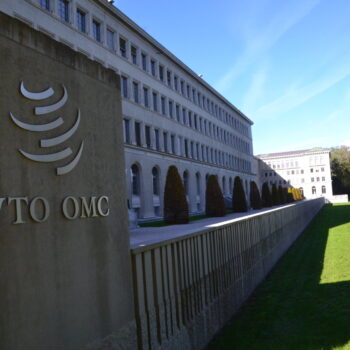The European state aid framework is one of the most important tools the European Commission has at its disposal to influence national policies and the internal market – but also one of the most complex.
As the European Commission finalises its guidelines on energy and environmental aid, we attempt to summarize what it is all about.
i. What is state aid?
State aid refers to forms of assistance granted to selected “undertakings” by national public authorities which has the potential to distort competition and affect trade between member states (Article 107(1) TFEU). Subsidies granted to individuals or general measures open to all enterprises are not considered to constitute state aid.
Rules are in place to ensure fair competition and a single common market, and to prevent public interventions to unduly distort the competitive market, hinder long-term competitiveness by supporting inefficient aid-dependent undertakings, or allow member states to favour their own industries.
The treaty on the functioning of the EU thus forbids state aid (Article 107(1) TFEU); with certain exemptions: in some circumstances government interventions are necessary for a well-functioning and equitable economy, and the treaty stipulates that state aid which promote legitimate objectives can be exempt from that prohibition (Article 107(2) & (3) TFEU). In the context of the European low carbon transition, the potential exemptions to “an important project of common European interest” (107(3b.)) and “to facilitate the development of certain economic activities” (107(3c.)) are particularly relevant.
It is these Treaty exemptions on which the Commission’s frameworks, guidelines and block exemptions are based, which allow Member States to legally give certain kinds of advantages that will notably promote research, development and innovation, environmental protection, investment in SMEs or access to broadband.
The European Commission monitors and controls state aid in the EU. Only the European Commission can grant an exemption. Member States must thus notify and seek approval from the Commission before granting state aid. If aid is granted before being properly notified to and approved by the Commission, and is later on found to be in breach of the rules, the Commission is obliged to order the recovery of any aid from the beneficiaries. This involves repayment with interest to the public authorities that granted the aid, even if this means that the companies concerned go bankrupt.
It is one the most powerful levers the European Commission has at its disposal to enforce the internal market principles.
ii. How is state aid verified?
iii. Notification procedure – Member States must notify new aid measures to the European Commission and must wait for the Commission’s decision before they can put these measures into effect. There are a few exceptions to this mandatory notification, notably for:
- Aid covered by a “block exemption”, which gives automatic approval for a range of pre-defined aid measures deemed less distortive to the competition by the Commission. Such exemptions are defined by Block Exemption Regulations, and currently cover some 26 areas including regional, SME or environmental aid.
- “De minimis” aid not exceeding €200,000 per undertaking over a period of three fiscal years.
- Aid granted under an aid scheme already authorised by the Commission.
iv. Is it state aid? – The Commission must then assess whether the notified aid measure is indeed state aid. A measure is state aid if it fulfils all of the following criteria:
- It is granted by the state or through state resources;
- It is selective, and provides an advantage;
- It distorts, or threatens to distort competition;
- It may affect trade between Member States.
If the measure is not considered to be state aid, it may be implemented. If the measure is indeed state aid, the Commission must then assess whether it is compatible with EU rules.
v. Can it be exempted? – State aid can be considered compatible with the internal market provided it promotes legitimate policy objectives, and its benefit outweighs any distortion of competition. The European Commission assesses the compatibility of aid with the common market through the ‘balancing test’:
- Objective: Is the aid measure aimed at a well-defined objective of common interest?
- Need for state intervention: Is the proposed aid targeted towards remedying an existing and well-defined market failure?
- Appropriateness: Is the aid an appropriate policy instrument to address the objective of common interest?
- Incentive effect: Does the aid engage the recipients in additional activity they would not carry out, or would carry out in a restricted manner without the aid?
- Proportionality: Is the aid measure proportional to the problem tackled? Is the aid amount limited to the minimum needed to achieve the results sought?
- Effect on competition and trade: Are the distortions of competition and effect on trade limited, so that the overall balance is positive?
Examination & Investigation – Following the formal notification by a Member State, the Commission has two months examine and take a decision, or ask for further information. In practice, the timetable for approval is longer (6-9 months). The Commission’s decision may be to approve, reject, or open a “formal investigation”.
The formal investigation, which can take up to 18 months, allows interested parties (civil society, competitors, etc.) to submit comments.

For complete information on the European state aid regime, consult the Commission’s State Aid Manual of Procedures here, or DG Competition’s website.


